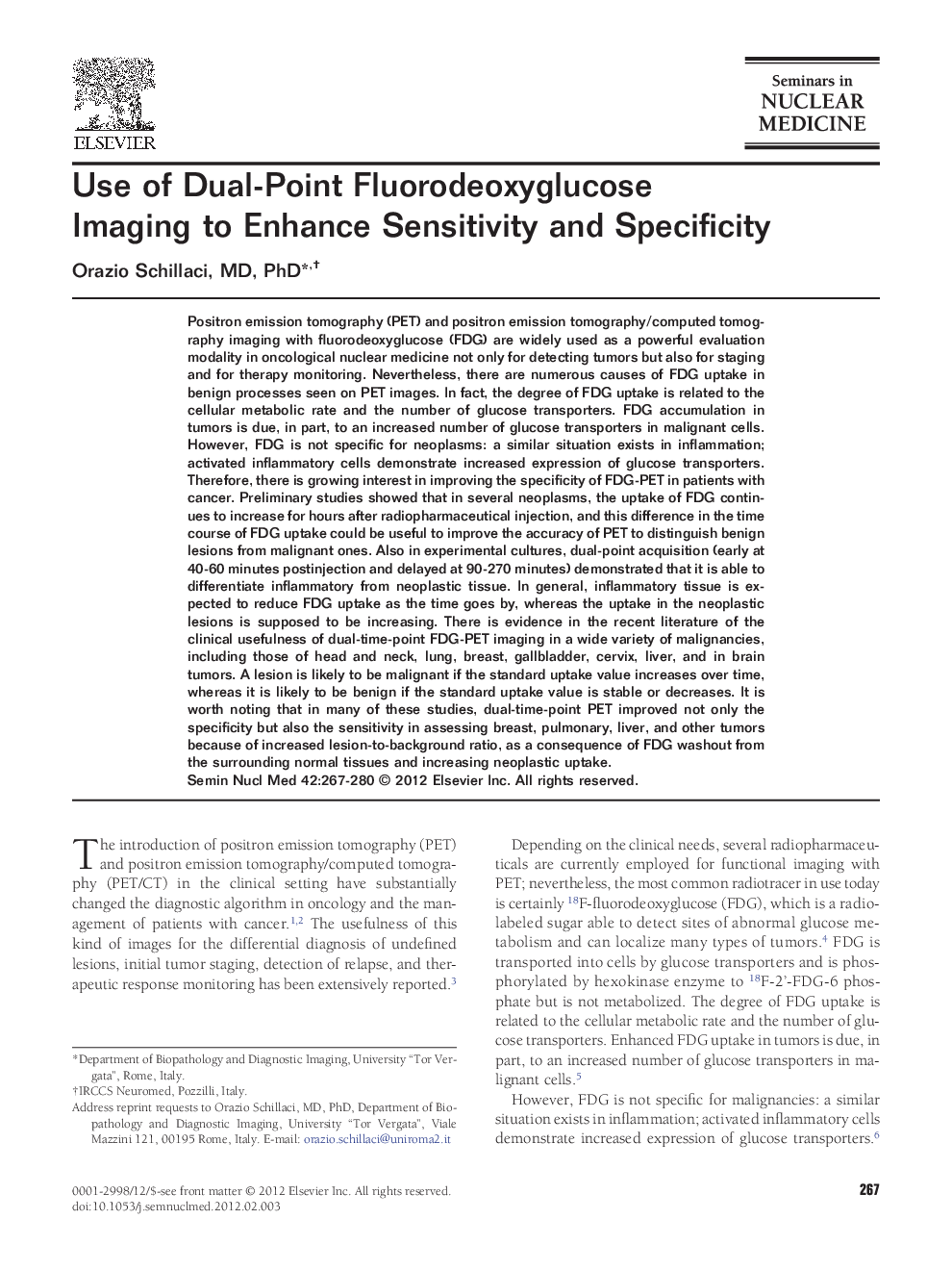| Article ID | Journal | Published Year | Pages | File Type |
|---|---|---|---|---|
| 4250999 | Seminars in Nuclear Medicine | 2012 | 14 Pages |
Positron emission tomography (PET) and positron emission tomography/computed tomography imaging with fluorodeoxyglucose (FDG) are widely used as a powerful evaluation modality in oncological nuclear medicine not only for detecting tumors but also for staging and for therapy monitoring. Nevertheless, there are numerous causes of FDG uptake in benign processes seen on PET images. In fact, the degree of FDG uptake is related to the cellular metabolic rate and the number of glucose transporters. FDG accumulation in tumors is due, in part, to an increased number of glucose transporters in malignant cells. However, FDG is not specific for neoplasms: a similar situation exists in inflammation; activated inflammatory cells demonstrate increased expression of glucose transporters. Therefore, there is growing interest in improving the specificity of FDG-PET in patients with cancer. Preliminary studies showed that in several neoplasms, the uptake of FDG continues to increase for hours after radiopharmaceutical injection, and this difference in the time course of FDG uptake could be useful to improve the accuracy of PET to distinguish benign lesions from malignant ones. Also in experimental cultures, dual-point acquisition (early at 40-60 minutes postinjection and delayed at 90-270 minutes) demonstrated that it is able to differentiate inflammatory from neoplastic tissue. In general, inflammatory tissue is expected to reduce FDG uptake as the time goes by, whereas the uptake in the neoplastic lesions is supposed to be increasing. There is evidence in the recent literature of the clinical usefulness of dual-time-point FDG-PET imaging in a wide variety of malignancies, including those of head and neck, lung, breast, gallbladder, cervix, liver, and in brain tumors. A lesion is likely to be malignant if the standard uptake value increases over time, whereas it is likely to be benign if the standard uptake value is stable or decreases. It is worth noting that in many of these studies, dual-time-point PET improved not only the specificity but also the sensitivity in assessing breast, pulmonary, liver, and other tumors because of increased lesion-to-background ratio, as a consequence of FDG washout from the surrounding normal tissues and increasing neoplastic uptake.
